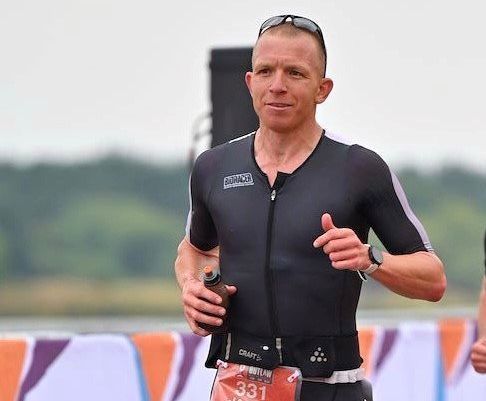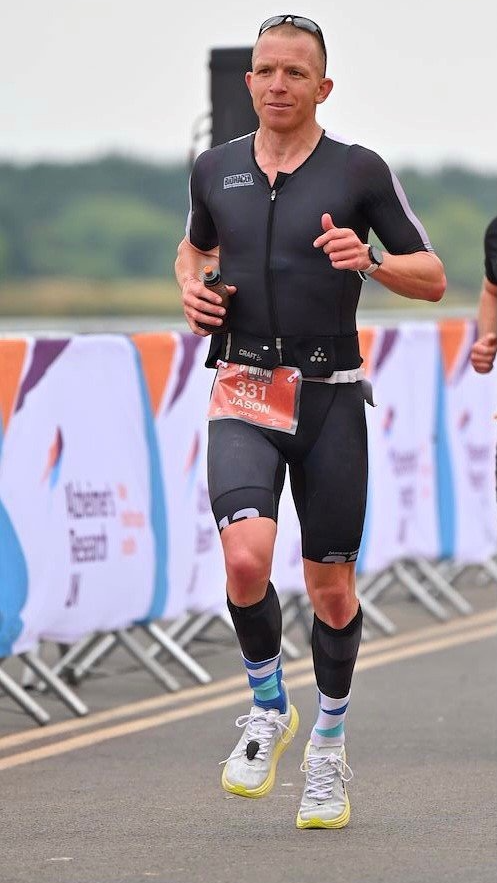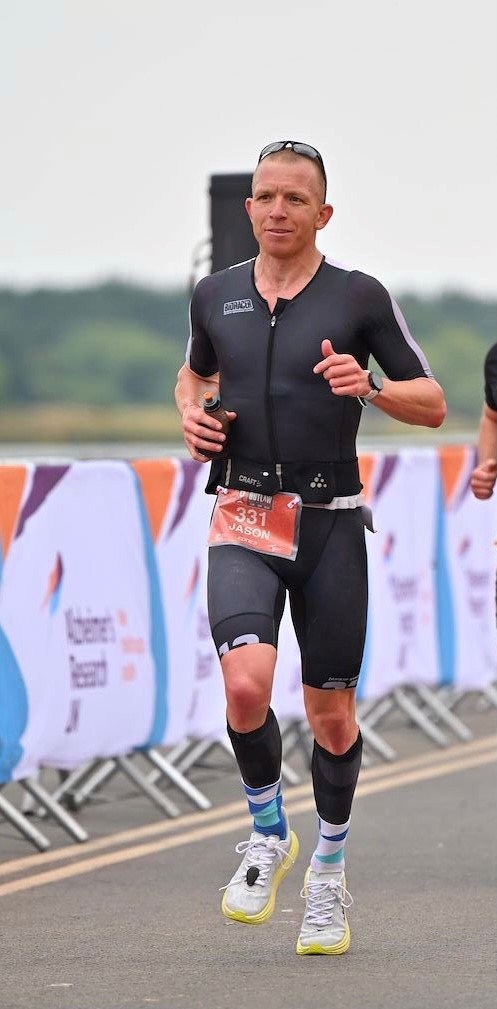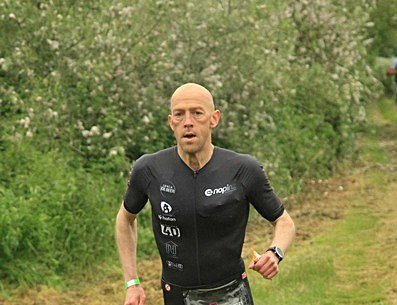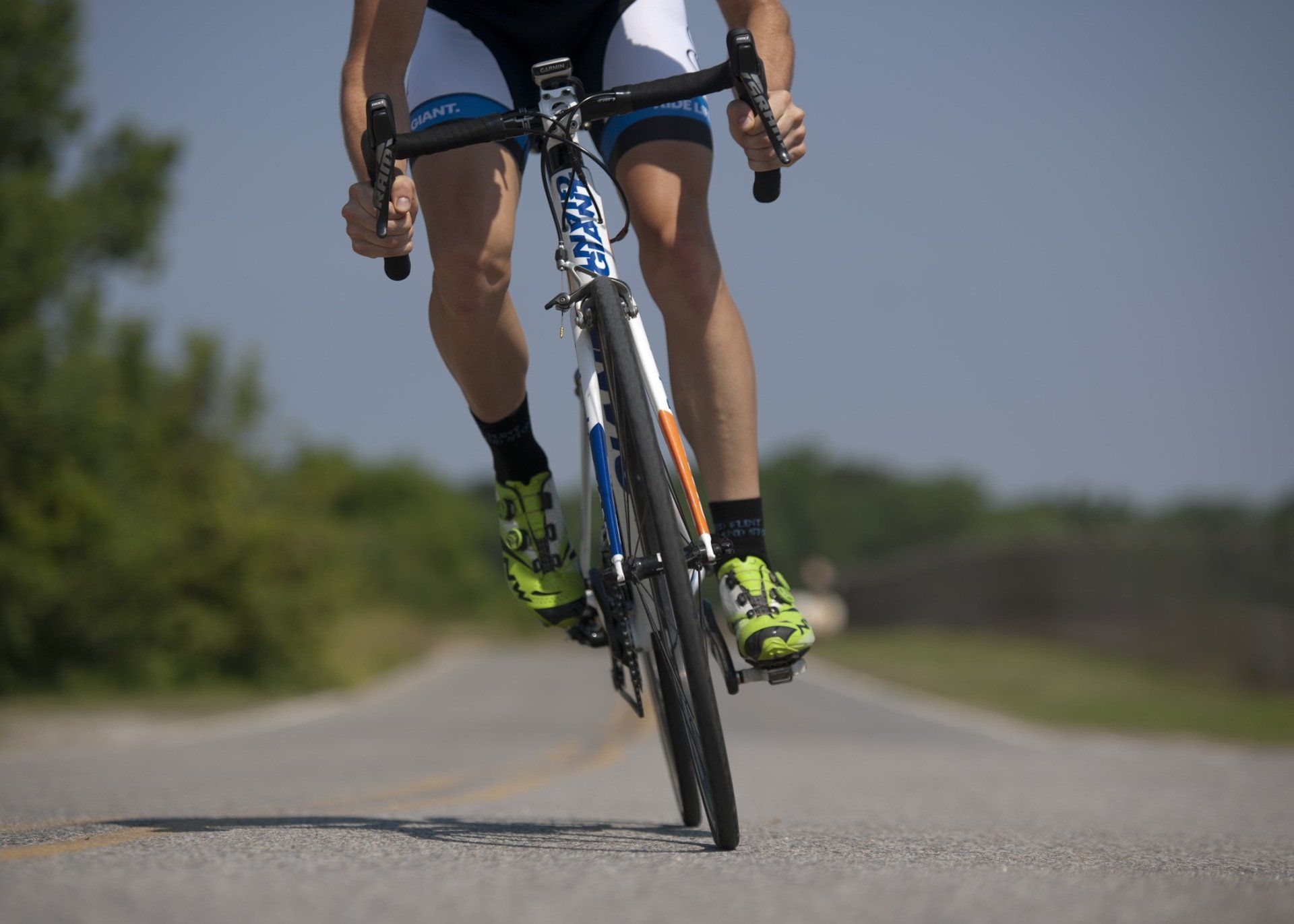By Jason Newbury
•
September 14, 2021
Often, when I’m cooking or baking with my son, I’ll search for a recipe online on my phone. As he becomes more and more impatient, usually clearing the kitchen cupboards of utensils and ingredients, I’ll desperately scroll past the long introduction food bloggers seem to insist on writing before they get to the recipe, frantically searching for what we’ll need and how to actually begin creating whatever masterpiece we’re attempting that day. If for some very strange reason you’re in a desperate rush to know how I use UCan products in training, I’ve marked the start of that section of this post with some bold letters and stars to help you with your scrolling. If, however, you like a little bit of a story with your nutritional advice (and assuming you don’t have a 7-year-old clearing your cupboard of UCan powders and bars) I thought I’d share a bit of a tale as to how I first came across UCan. So, make a coffee and get comfy, because we’re going back to October 2019 and the beautiful sunny island of Hawaii… Kailua-Kona (or Kona as it is normally referred to in triathlon circles) has already been on my radar for around a decade as I sit watching the Ironman World Championships in October 2019. Since I first heard about it from a friend who inspired me to first attempt marathon running in 2008, the thought of trying to qualify for the age-group world championship, held on the island simultaneously to the professional race, has been one that has developed from crazy idea to wild obsession. As I watch the 2019 edition Jan Frodeno is comfortably pulling away from the field, matching my pre-race expectations and confirming my belief in him as the greatest long-distance triathlete to ever do the sport. It is another athlete, however, that is getting most of my focus. As Alistair Brownlee fades away, Tim O’Donnell who has been riding with Brownlee and Frodeno all day, continues to look strong on the run. Whilst not exactly an underdog, he finished fifth in 2013 and third in 2015, few pundits had been talking up O’Donnell’s chances pre-race, perhaps believing that, at 39, his best years were behind him. Yet here he was, looking as smooth on the run as his world-champion wife, with whom he stars in the fantastic “Tim and Rinny” YouTube channel, running along through the lava fields to a second-place finish. Shortly after this achievement O’Donnell is a much sought-after guest on triathlon podcasts and in triathlon circles. The same pundits who had largely ignored him pre-race, were now desperate to get some insight into O’Donnell’s success. Time and again he talked through his race and the preparation that had been marred by injury, but it was his nutritional approach that most piqued my interest. In 2019 I had attempted my first full-distance triathlon (3.8km swim; 180km bike; 42.2km run), only to be disappointed when the British summer time delivered a monsoon on race day, cancelling the bike segment of the race. It had put an end to my first full season of triathlon racing, in which I had completed my first two half-distance races, with my one big take away being that nutrition was going to be far more important and challenging than it had been in my years as a marathon runner. O’Donnell repeatedly mentioned a product called UCan, something he referred to as a “superstarch” and sang its praises as a way of providing a slower release of energy through the race. This was of particular interest to me as my build up to my first full-distance race had seen a decent number of nutritional issues – namely riding the rollercoaster of blood sugar highs and lows, nausea and, to put it mildly, a loose stomach. Professional triathletes singing the praises of a sponsor’s product is nothing new, so I’m always somewhat sceptical of the championing they give, but this seemed worth investigating if nothing else. So, with my science hat on (I have an MSc in Applied Exercise Physiology) I went looking into the background of UCan. What I found was a remarkable story, steeped in the tradition of science at its very best – problem-solving. The backstory appealed to the father in me, the O’Donnell success - the triathlete and the question of whether it would live up to the hype - the scientist. So, I ordered a tub of lemon UCan and the rest, as they say is history. I now use UCan most days in training, in the days leading up to races and during races. Over the next few blog posts I’d like to show you how and why I do… **HOW I USE UCAN PRODUCTS IN TRAINING** Pre-training fuel In general, I will consume very few calories pre-training, mostly as stomaching a lot of food before getting going can be a bit of a challenge. If the session is a longer endurance effort than I will normally have an omelette and a cup of coffee, deliberately trying to ensure my body is utilising its fat stores during the session – a key component of fitness for long-distance triathlon. If there is going to be some more higher intensity efforts included in the session, then I will look to have some carbohydrates to fuel the work. Here I’ll turn to my tried and tested overnight porridge mix which will be waiting for me in the fridge in the morning. Here’s my recipe: 1 scoop Cocoa Delite UCan 30g Oats 15g chia seeds 15g coconut flakes 100ml coconut milk Enough water to get just the right consistency Top tip – mix the UCan, water and coconut milk before adding the other ingredients to ensure the powder is well mixed in. I’ll normally do this is my Nutri-bullet and then just mix everything else in. I’ll normally eat it straight from the NutriBullet cup (don’t judge me!). Fuelling long days Inevitably, training for a race that covers over 200kms, including running a marathon at the end, requires some long training days, typically consisting of a 4-5 hour ride and a run immediately after. Staying fuelled during these sessions is a question of what you can stomach and what you can carry. If the aim of the session is basic endurance riding, then I’ll normally do the first 1-2 hours with just water and electrolytes and then have 2 scoops of Ucan (either Lemon or Cranberry and Raspberry) mixed in a 950ml bottle which I’ll carry on my bike and drink through the remainder of the session. I’ll normally mix in a fat-based fuel source in another bottle, or in with the UCan as well. I find this keeps me out of too large an energy deficit, a hugely important issue when looking for training consistency. I’ll also have a UCan bar in my jersey pocket or in the bento box on my bike. Having this to look forward to after 3-3.5 hours is a fantastic mental boost. As I get closer to race day these sessions will begin to include more intense efforts, replicating the sort of effort I’ll be looking to do on race day. For these I will start consuming my race mix, which consists of UCan and other carbohydrates after around 90 minutes. What’s in my race mix? Well, I guess you’ll have to come back for the race nutrition blog and find out… Between session fuelling Like most triathletes multiple training sessions in different disciplines is not uncommon for me to include in a single day. Perhaps unlike most triathletes, my multiple sessions often come with a quick turn-around. As an endurance coach (shameless business plug – thenwerun.com), I am fortunate to be able to fit my training in around coaching and doing the school run with our son every day. This normally means my training occurs during the hours he is at school. This is great for our family life, but it often means the gap between sessions is very short. Whilst I would love to sit down and consume a fancy meal in this time, it simply isn’t practical, so I tend to lean towards having something concocted in my trusty NutriBullet and then save the culinary delights for family dinner time. Here’s a typical mix I might go for between two sessions: 30g Whey protein Plain UCan (number of scoops will depend on how hard the sessions are that day, between 1 and 2) 100-200g blueberries 200ml coconut milk (lots of calories, which is perfect!) A whole avocado That and a coffee and I’m ready to go again in an hour or so. So, there we go. There’s 3 ways I use UCan in my day-to-day training. Nothing particularly fancy or ground-breaking, just what works for me and if there is one thing I would like anyone reading this to take away, it is this…find what works for you. I very much doubt you’ll be in the same situation I am in, have the same training or racing goals, or nutritional requirements, so have fun experimenting and finding what keeps you feeling strong in training and racing. Think about the aims of the session you are undertaking and fuel that work appropriately.
